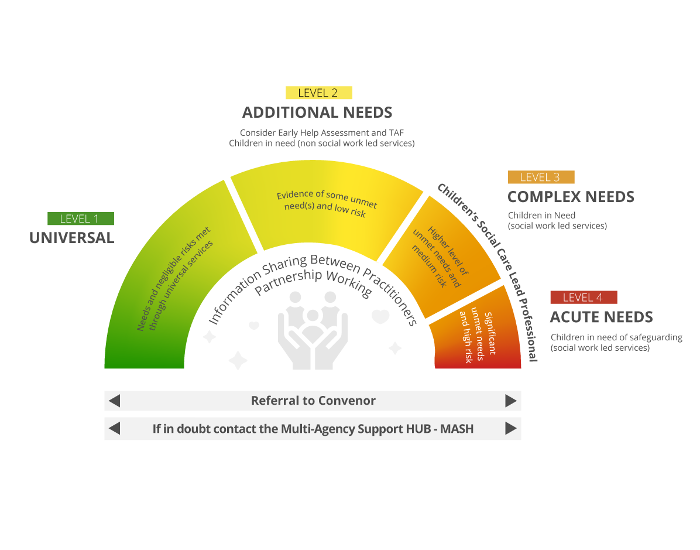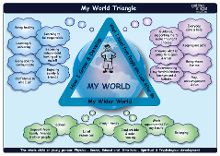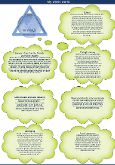- Home
- / Professionals
- / Threshold Framework
Threshold Framework
The Threshold Framework is a guide for all organisations supporting children, young people, and their families within the Bailiwick of Guernsey to ensure they understand how to direct people to the appropriate services and to provide a consistent level of response. It is an essential tool that underpins the local vision to promote the welfare and safety of vulnerable children and young people by providing targeted services at the earliest opportunity through to specialist and statutory interventions when these are required.
The Threshold Framework can be downladed here ![]() ISCP Threshold Framework [737kb]
ISCP Threshold Framework [737kb]
The Threshold on a Page document is a quick reference guide to the Indicators of Needs for Levels 1 - 4 ![]() Threshold on a Page [181kb]
Threshold on a Page [181kb]
Contents
Introduction
The Threshold Framework Multi Agency Guidance provides guidance for professionals who are working with children, young people and their families.
It aims to assist with identifying when a child may need additional support to achieve their full potential and it introduces a continuum of help and support to provide clarity around the roles and responsibilities at each threshold level of need.
The Children (Guernsey and Alderney) Law 2008 (Children Law) introduced a welfare based, integrated model for responding to concerns about children, including children in need, children at risk of serious harm and children at risk of compulsory intervention. The Children Law is underpinned by a set of key principles which have at their core the welfare of the child as the paramount consideration.
The Children Law created the Child, Youth and Community Tribunal (CYCT) and the role of the Children's Convenor. The CYCT replaces the court in the majority of cases where compulsory intervention is required. More information on the CYCT and Children's Convenor can be obtained at www.convenor.org.gg.
The Children Law placed a duty upon the Committee forHealth and Social Care (HSC) to prepare a Children and Young People's Plan (CYPP) every three years which sets out how services seek to meet the needs of children and their families. The plan sets out four priority outcomes for children:
- Be Safe and Nurtured
- Be Included and Respected
- Achieve Individual and Economic Potential
- Be Healthy and Active
Most children have a number of basic needs that can be supported through universal services. These universal services include education, child health, early years provision, housing, youth services and voluntary organisations. The Law however recognises that some children will need additional services to achieve a reasonable standard of health and development and some will need compulsory intervention.
This document provides a framework for professionals who are working with children and families. It aims to help professionals identify when a child may need additional support to achieve their full potential. It introduces a continuum of help and support, provides information on the levels of needs and gives examples of some of the factors that may indicate a child needs additional support. The framework recognises that however complex a child's needs, universal services will always be provided alongside any specialist additional service. It is recognised that children's needs are not static and that they may experience different needs at different times throughout their childhood years. The indicators of need contained in this document are not exhaustive but provide examples that can be used as a tool to assist assessment, planning and decision making when considering the needs of children and their safeguarding needs in particular.
This document should be used in conjunction with the Island Safeguarding Children Partnership (ISCP) Interagency Child Protection Guidelines.
Remember where there is an urgent and immediate need to protect a child dial 999 to contact the Police. Otherwise for all other children who may be at risk of significant harm, contact the MASH as soon as possible.
Legislative Context
The Child Welfare Principles and the Child Welfare Checklist
The Children Law sets out some principles that underpin decision-making and actions taken under the Law. These apply not only to the Court and Tribunal but also to professionals.
The overriding principle of the Children Law is that the child's welfare is the paramount consideration.
When carrying out any function under the Law public authorities must take into account any of the child welfare principles that are relevant ( Section 3(2).
The CHILD WELFARE PRINCIPLES are;
a) that a child's welfare is normally best served by being brought up within his own family and community,
b) that, where it is not possible for a child to be brought up within his own family or community, his welfare is normally best served by maintenance of regular contact with his family and community,
c) that no compulsory intervention shall be made in respect of a child, unless it is necessary for the effective provision to the child of care, protection, guidance or control,
d) that any delay in determining a question about a child's upbringing is likely to be prejudicial to the child's welfare,
e) that irrespective of age, development or ability, a child should be given an opportunity to express his wishes, feelings and views in all matters affecting him,
f) that, except where it is shown to the contrary, it is presumed that a child is capable of forming a considered view from the age of 12 years,
g) that a child in the care of the States is entitled to be provided with, and may expect to be subject to, insofar as is reasonably practical, similar levels of care, protection, guidance and control as would be expected to be provided or exercised in respect of a child by reasonable parents,
h) that in any case involving criminal activity, or the risk of criminal activity, by a child, the primary purpose of any compulsory intervention shall be the prevention of such activity in both the short and long terms,
i) that it is expected that parents and any others responsible for a child's welfare will consult and co-operate with one another, and where possible resolve matters by agreement, in an atmosphere of openness and non-confrontation, with recourse to formal proceedings (whether court or Tribunal) only as a last resort,
j) that it is normally in the best interests of a child to have ongoing contact with both parents and it is the responsibility of the parents and any public authority to take reasonable steps to promote such contact, and
k) that in determining any issue under this law there shall be no discrimination by any public authority on the grounds of gender, marital status, ethnic or cultural origin, religion, disability, age or sexual orientation.
CHILD WELFARE CHECKLIST
When determining any issue concerning the upbringing of a child under the Children Law, or the application of the child welfare principles, a public authority must also have regard to the matters set out in the child welfare checklist. These are:
a) the child's wishes and feelings (in the context of his age and understanding)
b) the age, gender, ethnicity, culturally background, language, religion and any other relevant characteristics of the child
c) any harm the child has suffered or is at risk of suffering
d) the child's physical, emotional and educational needs
e) how capable each of the parents (or any other person looking after or having parental responsibility for the child) is of meeting the child's needs
f) the importance and likely effect of contact between the child and his parents, siblings, relatives and any other people significant to the child
g) the effect or likely effect of any change in the child's circumstances, including the effect of the child's removal from Guernsey or Alderney.
Child in Need
The law recognises that some children, however, have more complex needs and may require access to specialist services to support them (Section 23). A child is in need if s/he:
- Needs additional services in order either to achieve or maintain a reasonable standard of health or development, or to prevent significant impairment to health or development;
- Is disabled;
- Is adversely affected, or likely to be, by the disability or illness of a family member.
Additional services are those deemed over and above the usual universal services provided to all children by the States of Guernsey which include ordinary schooling, routine immunisations and health checks.
Child at Risk
(1) A child is at risk when s/he is believed to satisfy the grounds for compulsory intervention (Section 35 of the Children Law).
The question as to whether compulsory intervention may be needed in respect of a child arises if -
(a) there is, or appears to be, no person able and willing to exercise parental responsibility in such a manner as to provide the child with adequate care, protection, guidance or control, and
(b) at least one of the conditions referred to in subsection (2) is satisfied, in respect of that child.
(2) The conditions are, that on a balance of probabilities-
(a) the child has suffered, or is likely to suffer, significant impairment to his health or development,
(b) the child has suffered, or is likely to suffer, sexual or physical abuse,
(c) the child has -
(i) misused drugs or alcohol, or
(ii) deliberately inhaled a volatile substance,
(d) the child is exposed, or is likely to be exposed, to moral danger,
(e) the child -
(i) has displayed violent or destructive behaviour and is likely to become a danger, to himself, or others, or
(ii) is otherwise beyond parental control,
(f) the child, being of 12 years of age or more, has committed-
(i) a criminal offence, or
(ii) what would be a criminal offence if the child had the necessary capacity, or
(g) the child (being under the upper limit of the compulsory school age) is failing to attend school without good reason.
Interagency working
One of the key elements of the Children Law, which is reflected in the CYPP is the duty placed upon agencies to work together and share information. The Guernsey and Alderney Child Protection Guidelines set out how agencies should work together and under what circumstances information can and should be shared. The States of Guernsey Information Sharing Guidance provides guidance on local procedures for information sharing.
It is recognised that no single agency can meet the identified needs of all children in need or at risk. In seeking to ensure the wellbeing of children in the Bailiwick, this creates an imperative for interagency communication, cooperation and collaboration to seek to reduce the risk of significant harm or impairment to a child's health or development.
All States of Guernsey employees and other persons have a duty whilst they are working with a child whom they reasonably believe is in need, or at risk, to take such action in relation to that child, and his circumstances, as may be required of them under the Children Law.
The Children Law also reflects the principle of providing integrated help and support at the earliest possible point for children and families to prevent problems developing or escalating to the point that the child is at risk. A Multi-Agency Support Hub (MASH) has been introduced to support this.
The MASH is a single point of entry to multi-agency help and support for children, young people and their families who have additional needs and who require the support of more than one agency or professional and is made up of representatives from key statutory agencies:
- Police
- Child Health
- School Attendance Service
- Children's Social Care
- Safer
Duty to investigate / share concerns
The Children (Miscellaneous Provisions) (Guernsey and Alderney) Ordinance, 2009 (the Children Ordinance) sets out the obligations of States Committees to identify, assess, report, record and investigate circumstances where children might be in need or at risk. Where it appears a child is in need HSC, or in certain circumstances, Education Services may assess the extent to which the child is in need (s.25 of the Children Ordinance).
Section 26 gives HSC a duty to investigate circumstances where compulsory intervention may be necessary. In cases where the concerns arise mainly from a child's failure to attend school Education Services are responsible for discharging the duty.
Where concerns about a child come to the attention of a States Committee, they must make sufficient inquiries to determine whether or not the concerns about the child should be reported to HSC (s25 of the Children Ordinance).
If you work with children in Guernsey or Alderney and believe a child you work with is in need of additional support or is at risk, you should make enquiries to the MASH in writing using the MASH enquiry form. The MASH will then decide what will happen next.
The MASH agencies will carry out initial inquires to identify the child's needs. This may lead to children being signposted to other agencies for support, no further action or a child protection investigation being undertaken. Where it appears that further assessment of the child's needs by a social worker are needed the matter will be referred to one of the HSC locality teams. Where there may be a need for compulsory intervention a referral will be made to the Children's Convenor, who will investigate the case and decide whether there are grounds to refer the child to the Child, Youth and Community Tribunal (CYCT).
In addition to referring to MASH, any person (who believes that compulsory intervention may be necessary to ensure the provision of adequate care, protection, guidance or control for a child) may refer the matter to the Convenor at any time.
If, following investigation by HSC, it is thought that the child may be in need of compulsory intervention HSC will refer the matter to the Convenor.
Continuum of Need & Step Up and Step Down
Level 1: Universal services / single agency support
These are children with no additional needs; all their health and developmental needs will be met by universal services. These are children who consistently receive child focused care giving from their parents or carers. The majority of children living in the Bailiwick require support from universal services alone.
Level 2: Early Help
These are children with additional needs, who may be vulnerable and showing early signs of abuse and/or neglect; their needs are not clear, not known or not being met. These children may be subject to adult focused care giving and the question of compulsion should be considered. Level 2 is the threshold for multi-agency Early Help through the Early Help Assessment and/or the Team Around the Family (TAF) process. These children require a coordinated approach to the provision of additional services such as family support, parenting programmes etc.
Level 3: Complex needs
These children require specialist services in order to achieve or maintain a reasonable standard of health or development or to prevent significant impairment of the health and development and/or who are disabled. In some cases these children's needs may be secondary to the adults' needs. The question of whether compulsory intervention is required should be considered. These children may require intervention from specialist services. This is the threshold for an assessment led by children's social care.
Level 4: Acute needs
These children are suffering or are likely to suffer significant harm. This is the threshold for child protection. These children are likely to have already experience adverse effects and to be suffering poor outcomes. Their needs may not be considered by their parents. Compulsory intervention is likely to be required to overcome adversity and risk. This level also includes children with significant health care needs and those who require specialised care away from home.
Compulsion and Referral to the Convenor
The question of whether compulsory intervention is required may arise at any level of need. For the majority of children who have additional needs their parents or carers will work with additional and specialist services to ensure that their children's need are met. Some however will be either unwilling or unable to access appropriate advice and support. Where it is considered that compulsory intervention may be necessary to ensure that a child or young person's needs are met a referral to the Convenor should be made.
Step up / Step down / Step in
Children's needs do not necessarily remain constant throughout their lives; they can move between levels of need. Also, children in the same family can have different levels of need.
The Step Up Step Down Practice Guidance can be found here
Step Up Step Down Practice Guidance [603kb]
Assessment
The "My World Triangle", developed in Scotland is used within Guernsey & Alderney to assess the needs of children and their families. The "My World Triangle" was significantly influenced by the UK Department of Health's "Framework for the Assessment of Children in Need and their Families" and will therefore be familiar to those professionals who have trained or worked in the UK. The "My World Triangle" is used at every stage to think about the whole world of the child or young person including risks, needs and positive features in their lives. It has been designed so that the language used is accessible to children and young people.
The My World Triangle should be used to identify the interplay between the three domains to assess the child's needs and form a judgement regarding the level of need.
Further information on each of the domains:
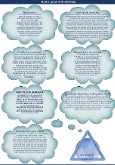
How I grow and develop [468kb]
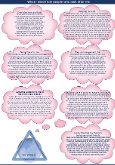
What I need from people who look after me [567kb]
Indicators of Need
The indicators of need are designed to provide practitioners with an overarching view on what tier of support and intervention a family might need.
This is not intended to be a 'tick-box' exercise, but to give a quick reference guide to support professionals in their decision making, including conducting further assessments, referring to other services and understanding the likely thresholds for higher levels of intervention.
Remember that if there is a combination of indicators of needs under Level 2, the case may be a Level 3 case overall.
Also remember that need is not static; the needs of a child and family will change over time. Where a plan has been agreed this should be reviewed regularly to analyse whether sufficient progress has been made to meet the child's needs and on the level of risk face by the child. This will be important in cases of neglect where parents and carers can make small improvements, but an analysis will need to be undertaken on whether this leads to significant improvements for the child.
If you have child protection concerns consult the ISCP Child Protection Guidelines and you must inform your safeguarding lead or line manager.
Threshold on a Page
This downloadable resource shows Levels 1-4 indicators of need on one page.


